In Johor Bahru, Malaysia, Formwerkz Architects and S H MOK reinterpret traditional courtyards and vernacular tropical forms with a vast cloistered home.

June 14th, 2019
The courtyard is a sensible spatial response to the client who requests a communal family lifestyle but also privacy and security. In the case of this large house in Johor Bahru, Singapore-based studio Formwerkz Architects worked with Malaysian S H MOK Architect to use courtyards as well as cloisters to create spaces with the capacity to be used in many ways.
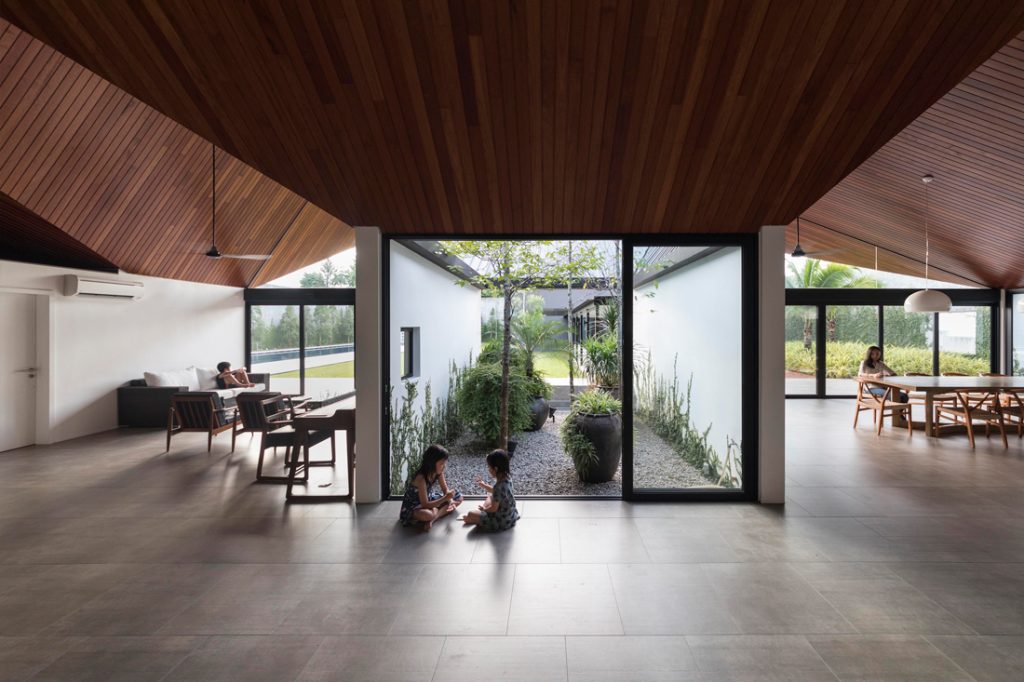
The clients are regular entertainers so they also needed generous spaces for hosting events of various scales. Formwerkz drew inspiration from the traditional Chinese courtyard house but looked for ways to adapt that typology to the tropical context.

The starting point was the raising of five-metre-high walls around the 45,000-square-foot site, which created a safe environment in which kids can play without too much adult supervision. The house was sited toward the street end of the site, which left space for a large rear garden, pool and annex block. The family’s bedrooms are relegated to the annex block, and as such the main house is given over entirely to living and entertainment.
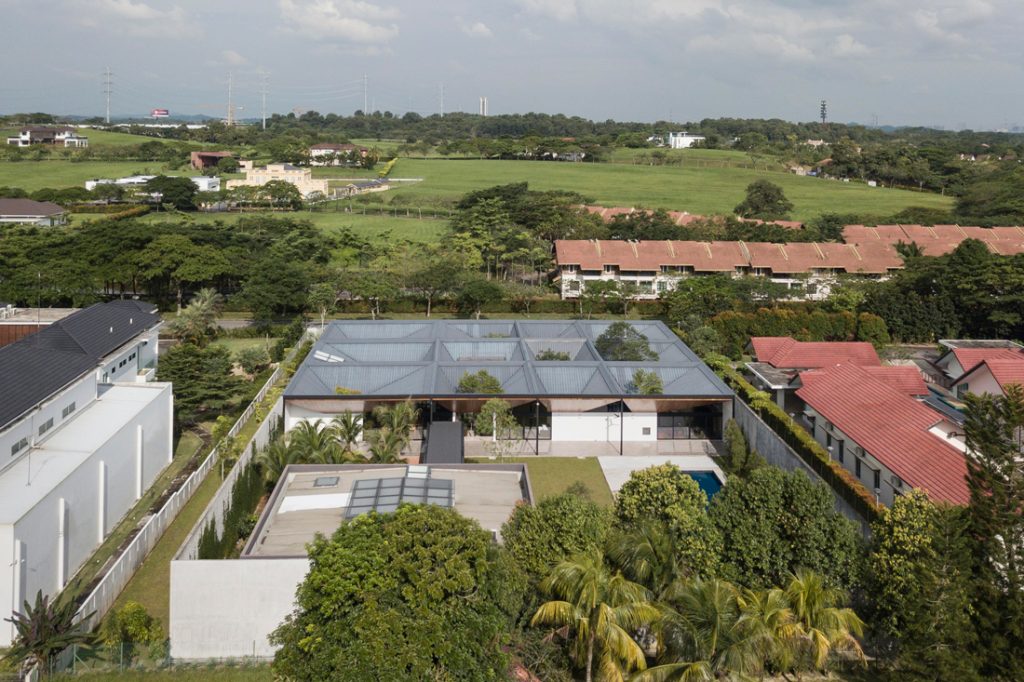
The main house is divided with a grid into a series of volumes, each topped by an inverse pitched roof and punctuated by a courtyard. The piercing of the deep plan with the courtyard openings was crucial for the delivery of light and ventilation into every part of the house.
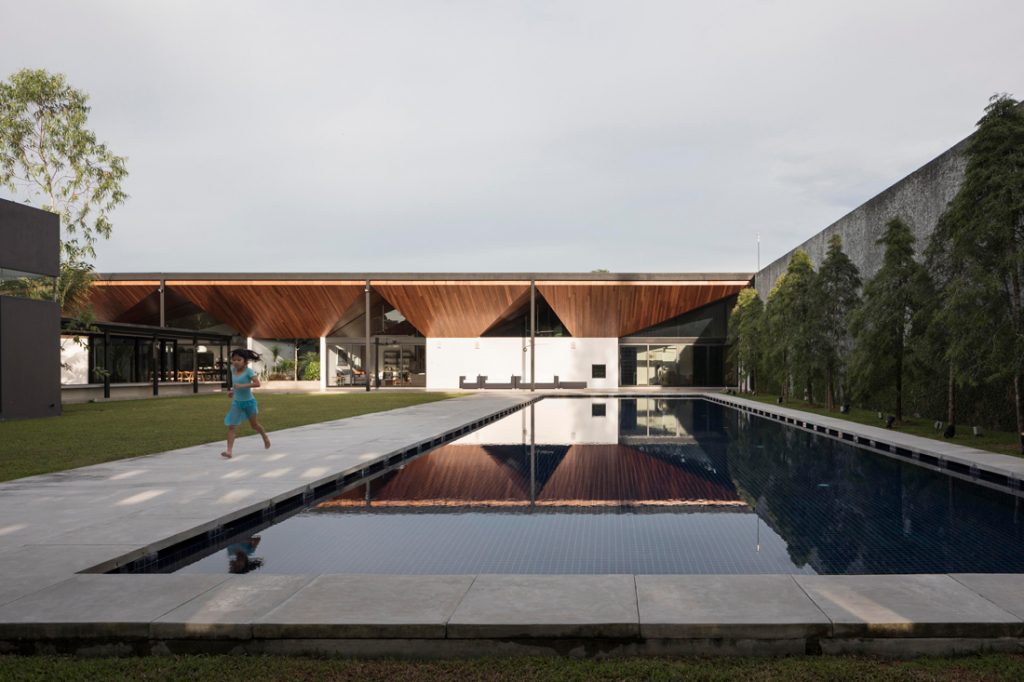
Each courtyard has a different treatment; some contain a ponds and gravel gardens, others are screened off with sliding glass panels, or bricked up to serve as an entertainment room.
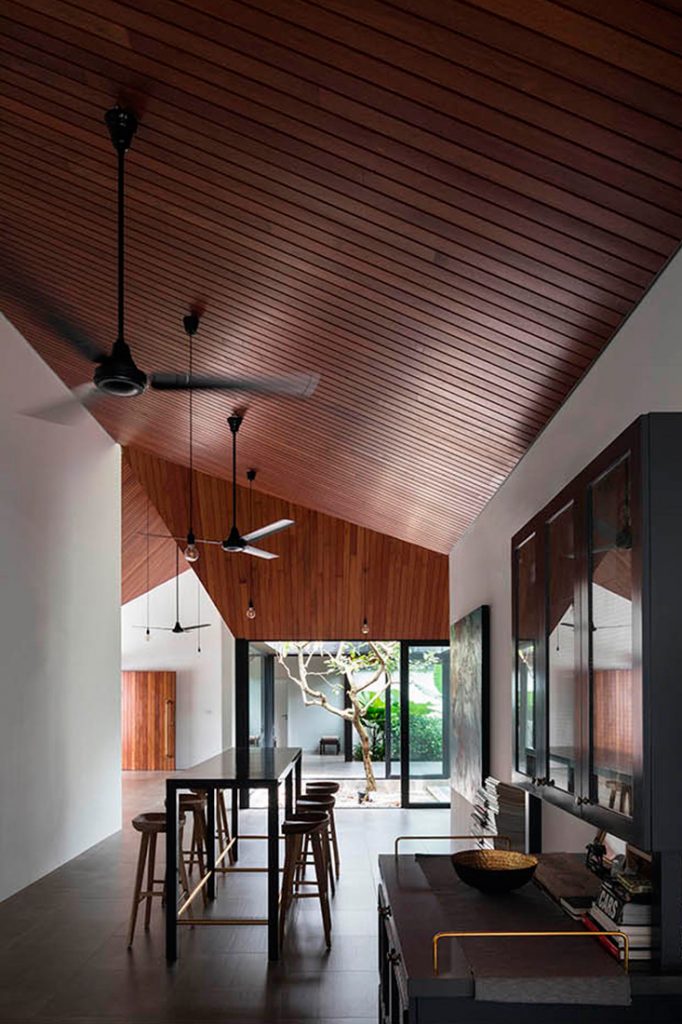
The living spaces cluster around the courtyards as cloisters rather than as strictly definable rooms, with furniture placed with a degree of sensitivity to the sun’s daily path. Communal living and entertaining can thus play out organically, wherever space is most conducive to need, beneath an impressive timber ceiling terrain.
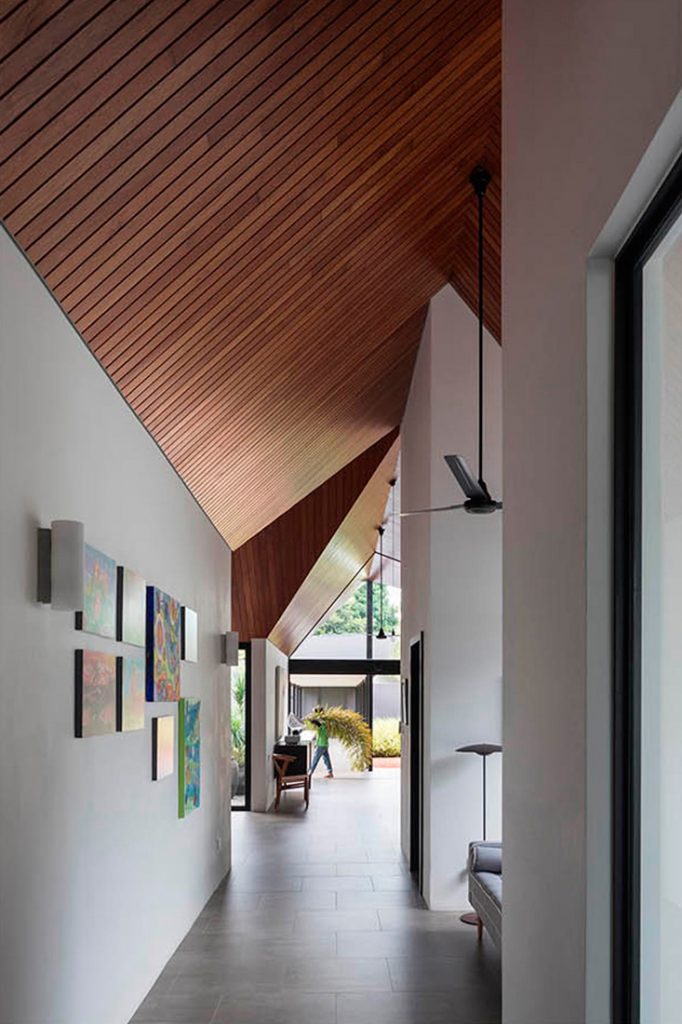
Explains Alan Tay, a Partner at Formwerkz Architects, “The pitched roof, a cornerstone element of the tropical architecture, is inverted and expressed as a key architectural ceiling feature in the house. The roof slopes toward the courtyards in a reverse pitch fashion, giving rise to a series of undulating timber ceiling ridges.”
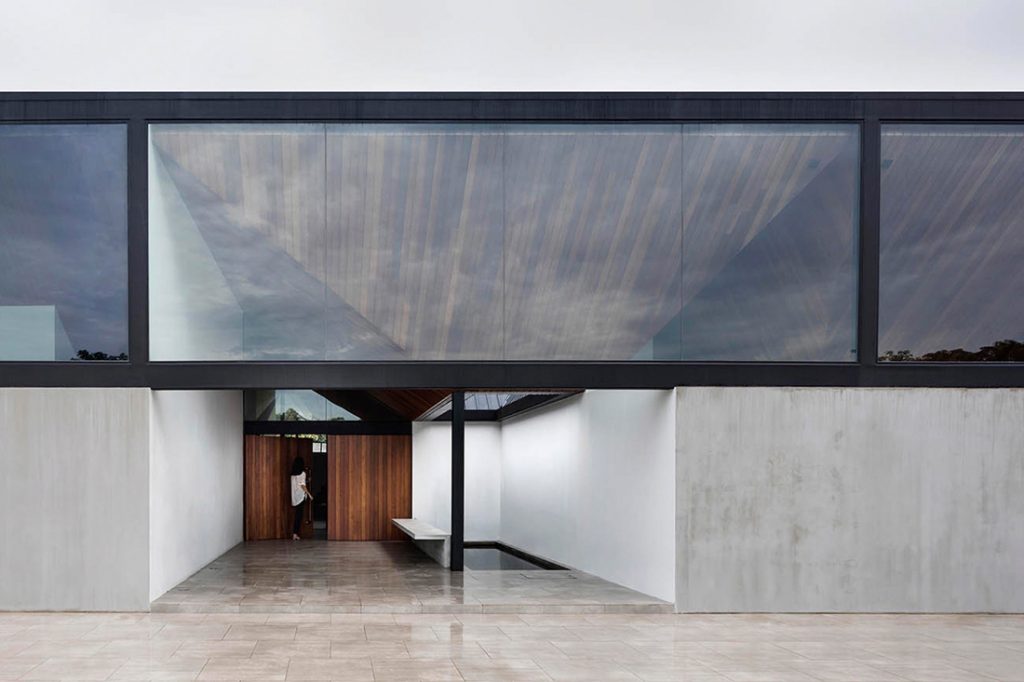
“At nightfall,” says Tay, “one catches a glimpse of the glow of the light internally, as it washes over the undulating timber ceiling ridges, revealing the intricacy within.”
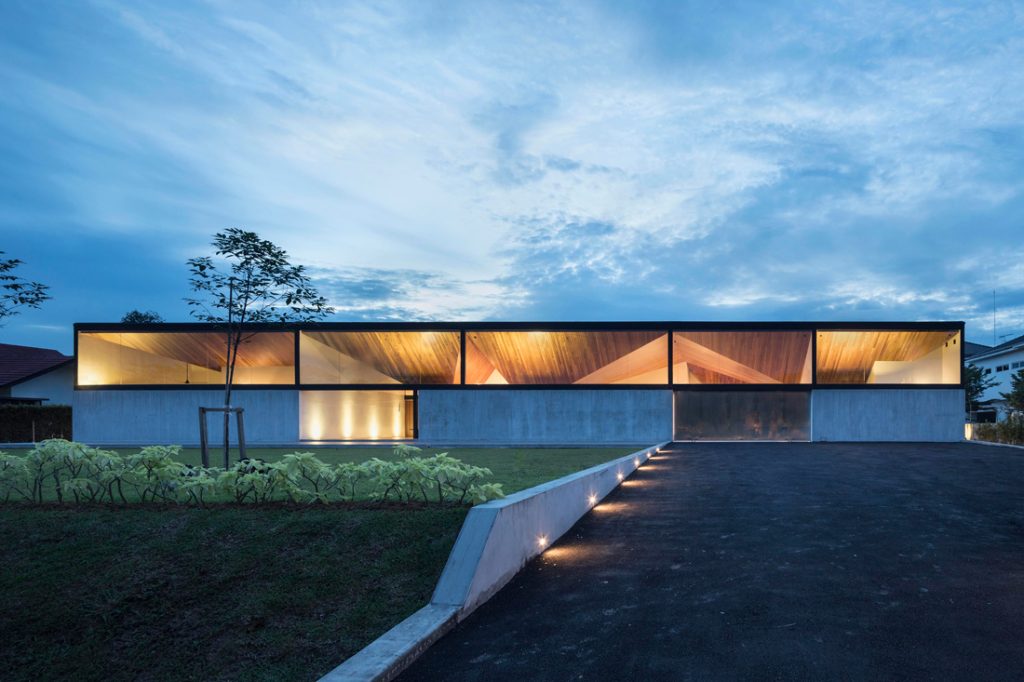
Designer: Formwerkz Architects
Executive Architect: S H MOK Architect
Project Lead: Alan Tay
Project Team: Iskandar Idris, Sarah Ng
INDESIGN is on instagram
Follow @indesignlive
A searchable and comprehensive guide for specifying leading products and their suppliers
Keep up to date with the latest and greatest from our industry BFF's!

The undeniable thread connecting Herman Miller and Knoll’s design legacies across the decades now finds its profound physical embodiment at MillerKnoll’s new Design Yard Archives.

A longstanding partnership turns a historic city into a hub for emerging talent
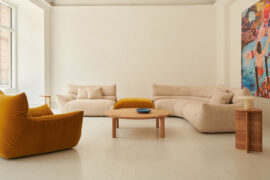
A curated exhibition in Frederiksstaden captures the spirit of Australian design

For Aidan Mawhinney, the secret ingredient to Living Edge’s success “comes down to people, product and place.” As the brand celebrates a significant 25-year milestone, it’s that commitment to authentic, sustainable design – and the people behind it all – that continues to anchor its legacy.

Merging residential living with the retail experience, the latest project from In Addition breathes new life into shopping for the home.

Adam Markowitz Design, in collaboration with Simeon Dux, has been awarded The Object at the INDE.Awards 2025. Their winning project, A Cabinet of Curiosities, is a masterwork of craftsmanship and adaptability; a poetic response to shifting domestic and professional life in the post-COVID era.
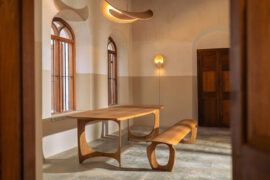
From Australian architects to Spanish and Indian designers, Design Mumbai 2025 expands its international reach — proving India’s growing role on the global design stage.
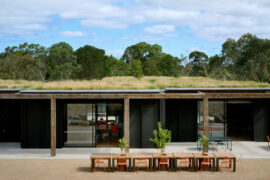
McIldowie Partners, in association with Joost Bakker, has been awarded The Learning Space at the INDE.Awards 2025. Their project, Woodleigh Regenerative Futures Studio, redefines the educational environment as a living ecosystem that nurtures sustainability, innovation, and community.
The internet never sleeps! Here's the stuff you might have missed

‘Civic Vision | Foster + Partners’ is the first comprehensive exhibition of the practice’s work to be held in Australia, providing an in-depth look at its global portfolio of work since it was founded in 1967 by Norman Foster.
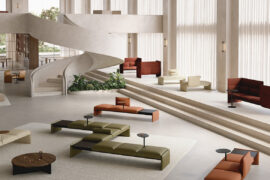
Where style and substance truly dwell, Gardam’s latest modular collection – available through Stylecraft – balances elegance and versatility.